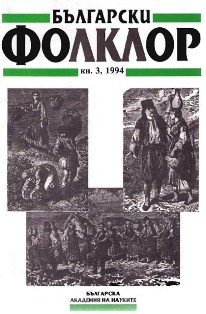

Keywords: Annales school, psychohistory, history of mentality, wooman history
In this article I try to describe history of the Annales school since it´s constitution in 1929 to the present. I observe the theories, which inspired this school. About all I addict attention to book – titles, which was wrote by historians, associated in inducted Annales. Especially belaud the most distinguished personalities, for example Marc Bloch, Lucien Febvre, Fernand Braudel, Jacques Le Goff or Roger Chartier. I illuminate to their apport for history in France and for the other countries (for example in Bohemia, Brasil, Poland or Spain). I believe, that the fourth generation of Annales school actually exist and in future will provide new impulses and themes for historical research...
More...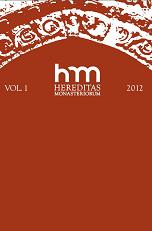
Keywords: Order of the Holy Sepulchre of Jerusalem; Miechów; Little Poland; Annales Miechovienses; manuscript; narrative sources; Samuel Nakielski; historiography; textual criticism
Annales Miechovienses started in the Middle Ages in the Order of the Holy Sepulchre of Jerusalem in Miechów. In the 19th and 20th centuries three editions of this Annales were done (1866, 1872, 1960). During the World War II the book with the manuscript, on the basis of which this chronicle has been issued in print, was irretrievably lost but fortunately, the photographies of the text of Annales were preserved. Some of the historians believed, that even in the 17th century in the monastery in Miechów existed two copies of manuscripts of the Annales Miechovienses: the first one, that in 19th and 20th centuries became the basis of editions, and the second one – completely unknown. The proof of the existence of two different versions was to be the difference between the text presently known as Annales, and the quotes from the monastic chronicle included in the Samuel Nakielski’s book Miechovia sive promptuarium antiquitatum monasterii Miechoviensis, published in Cracow in the thirties and forties of the 17th century. According to some researches, the differences indicate that Nakielski drew his quotations from an unknown manuscript of the Annales Miechovienses. However, the analysis of Nakielski’s citations from other texts, with different narrative sources, indicates, that the author of Miechovia was not always passing the borrowed quotes accurately: he often introduced changes and amendments (he was adding his own sententeces, shortening them, changing dates etc.). Therefore, the differences between the text of Annales known today, and references to it in Miechovia, could not be a sufficient argument for the thesis statement outlined above. The analysis of Miechovia suggests, that the source from which Nakielski was quoting the passages of monastic chronicle, contained additionaly other texts missing in the manuscript book, part of which is presently known as the text of Annales Miechovienses. Therefore, it is a proof that, indeed, in Nakielski’s times existed two manuscripts of the work, placed in two different books. Presumably, the unknown version of Annales Miechovienses was more extensive one than the version preserved to this day.
More...Eine wichtige Komponente der Rekatholisierung in den böhmischen Ländern stellt die Wirkung des Kapuzinerordens dar, die in den allgemeineren Studien zur Kirchengeschichte oft im Schatten vor allem der Jesuiten blieb. Gerade dem überraschend erfolgreichen Aufschwung der Kapuziner in den Ländern der Böhmischen Krone ist Bachelorarbeit des Autors gewidmet, auf der sich dieser Aufsatz stützt. Autor resümiert und bewertet die älteren Arbeiten zur Geschichte der Kapuziner, die immer noch in der Forschung häufig benutzt werden (vor allem die Werke der Ordens-, beziehungsweise Kirchengeschichtsschreibung, wie die Arbeiten von V. Rabas, F. Tischer, J. V. Šimák sowie auch, E. Schebek, E. Schwab oder O. Kamshoff ), aber auch die aktuelle Forschung (P. Matějka). Weiter analysiert die Studie die Quellen zum Thema, wo vor allem lateinischen narrativen Quellen, die im Orden selbst entstanden sind, wichtig sind: die ältesten Chroniken vom Konvent in Olmütz und in Prag (Hradschin) und dann vor allem die so genannten Kapuziner Annalen, ein umfangreiches Werk aus dem 18. Jahrhundert, die auch weitere Forschung über den Orden beeinflusste. Autor widmet sich detailliert dem Inhalt und auch der Form der Annalen, sowie auch ihren Autoren. Im Weiteren charakterisiert er auch das Aktenmaterial (in den Fonds von Kapuzinerprovinz und vom Prager Erzbistum im Nationalarchiv Prag, von einzelnen Konventen vor allem in den Bezirksarchiven, aber auch in ausländischen Archiven). Im letzten Teil seiner Studie stellter die ersten Ergebnisse seiner Forschung vor, und zwar eine Analyse der personellen Verhältnissen im Orden in den ersten circa zwanzig Jahren seiner Wirkung in den böhmischen Ländern. Er benutzt die Kataloge der Mitglieder des Ordens zur quantitativen Analyse, aber ebenso zur Studie der geographischen Herkunft , teilweise auch sozialer Stellung und vor allem der dynamischen Entwicklung in der Ordenshierarchie. Der Aufschwung des Ordens wurde ohne Zweifel durch den Zuzug der Brüder aus den italienischen Provinzen ermöglicht; schrittweise wächst aber auch der Anteil der Brüder aus Mitteleuropa.
More...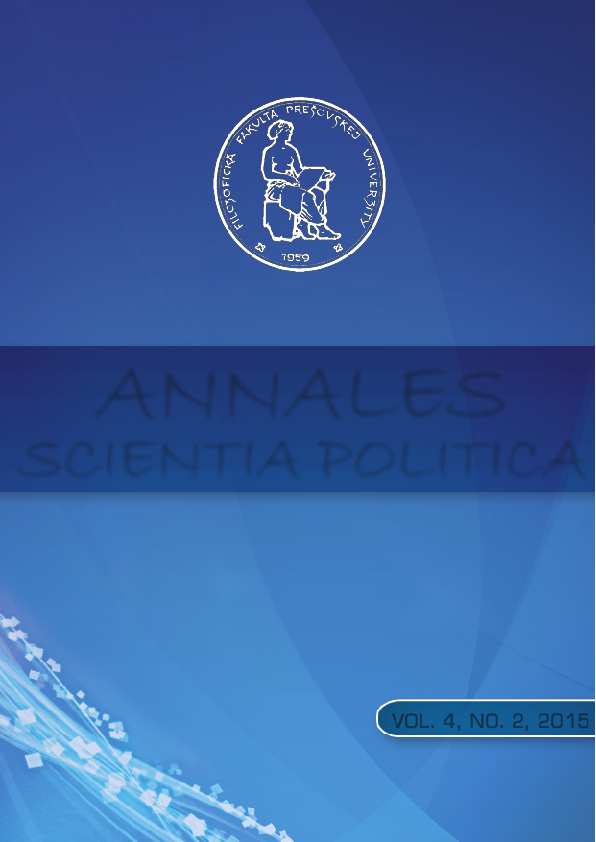
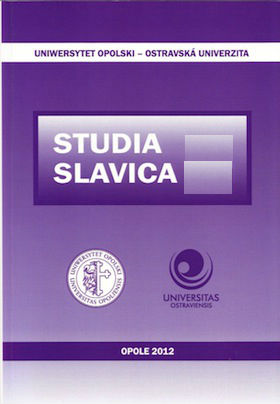
Keywords: Jan Długosz; Charles IV,;historiography; rhetoric;exemplum;
The article presents a piece of work of an excellent director of Polish theatre – Jerzy Jarocki, who was able to connect literature and historiosophy of writers whose plays were shown on a stage. Russian history was an object of interest for Jarocki, and it bloomed just during his studies on Russian Academy of Theatre Arts (GITIS). Several years in Russia helped him to realize a complicated past of the empire and let to know not only theatre events of the country. It was not an accident that he got fascinated with Witkacy‘s works whose involvement in the revolution appeared to be a real breakthrough in the writer‘s life and a source of tragic historiosophy. Jarocki, as the first of many directors, presented works of Sławomir Mrożek who was also interested in an eventful history of Russia. One of the last plays of Mrożek was “Love in the Crimea” which can be interpreted as a historiosophic allegory depicting a history of Russian culture from the end of the Tsarist Age, through Stalinism, to capitalism. The play was one of his last stagings in The National Theatre in Warsaw. The last theatre play was “The Case” based on “Samuel Zborowski” of Juliusz Słowacki. Jarocki updated a romantic drama and build an original, in its style, story about a Polish group madness - with a bard and his visions: with the corps of Samuel Zborowski and a chancellor Jan Zamoyski, Lucifer – a lawyer of the Polish Case, with Jesus Christ and the divine tribunal, the marshal Józef Piłsudski and Smoleńsk Disaster. ―The Case‖ became not only reading of a romantic drama, but also a picture of reality, a picture of what shapes the present.
More...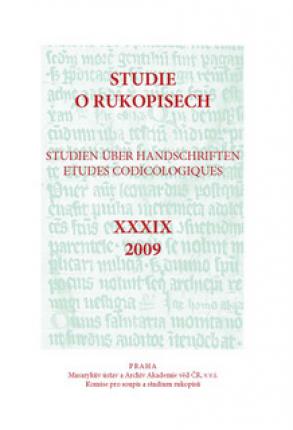
Keywords: annals; middle ages, Czech history
This study deals with two short Latin annalistic texts of Czech provenance dating from the turn of the 14th and 15th century which have been written according to two different models on a free place of ms. 5483 in the holdings of the Austrian National Library in Vienna and collected in one series of annals. The article examines the reference of these texts to other similar texts coming from the Czech late middle ages environment. The contents of the Annals is information about the last Přemyslides, genealogic records about Czech Luxemburger and news about what happened mostly in Prague in the 14th century.
More...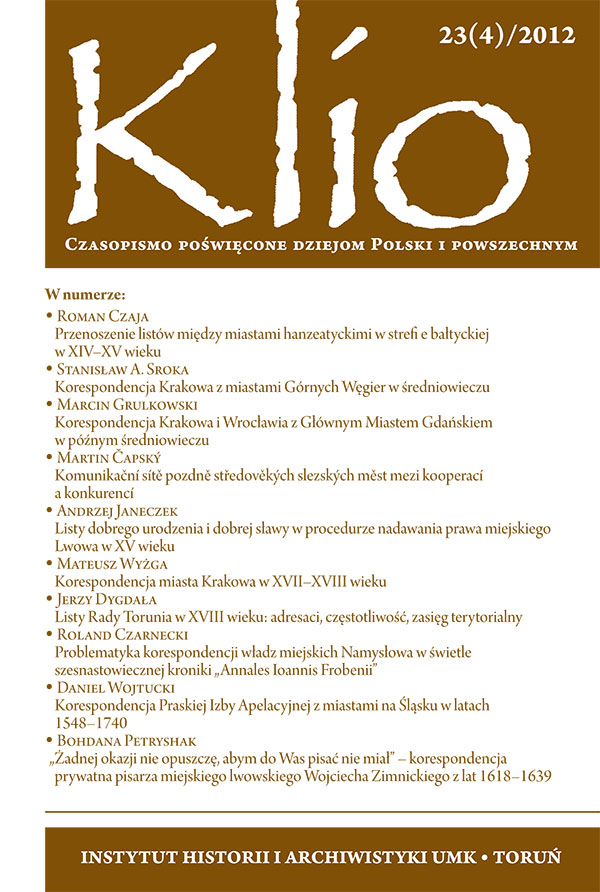
Keywords: Correspondence of Town Authorities of Namysłów; 14th - 16th century;
This paper aims to show a wide range of issues taken up in the correspondence of town authorities of Namysłów from the mid 14th century to the early 16th century. The chronicle „Annales Ioannis Frobenii ab anno 1347”, written at the turn of the 15th century, has been used as a historical source (the work covers the period 1347–1509).
More...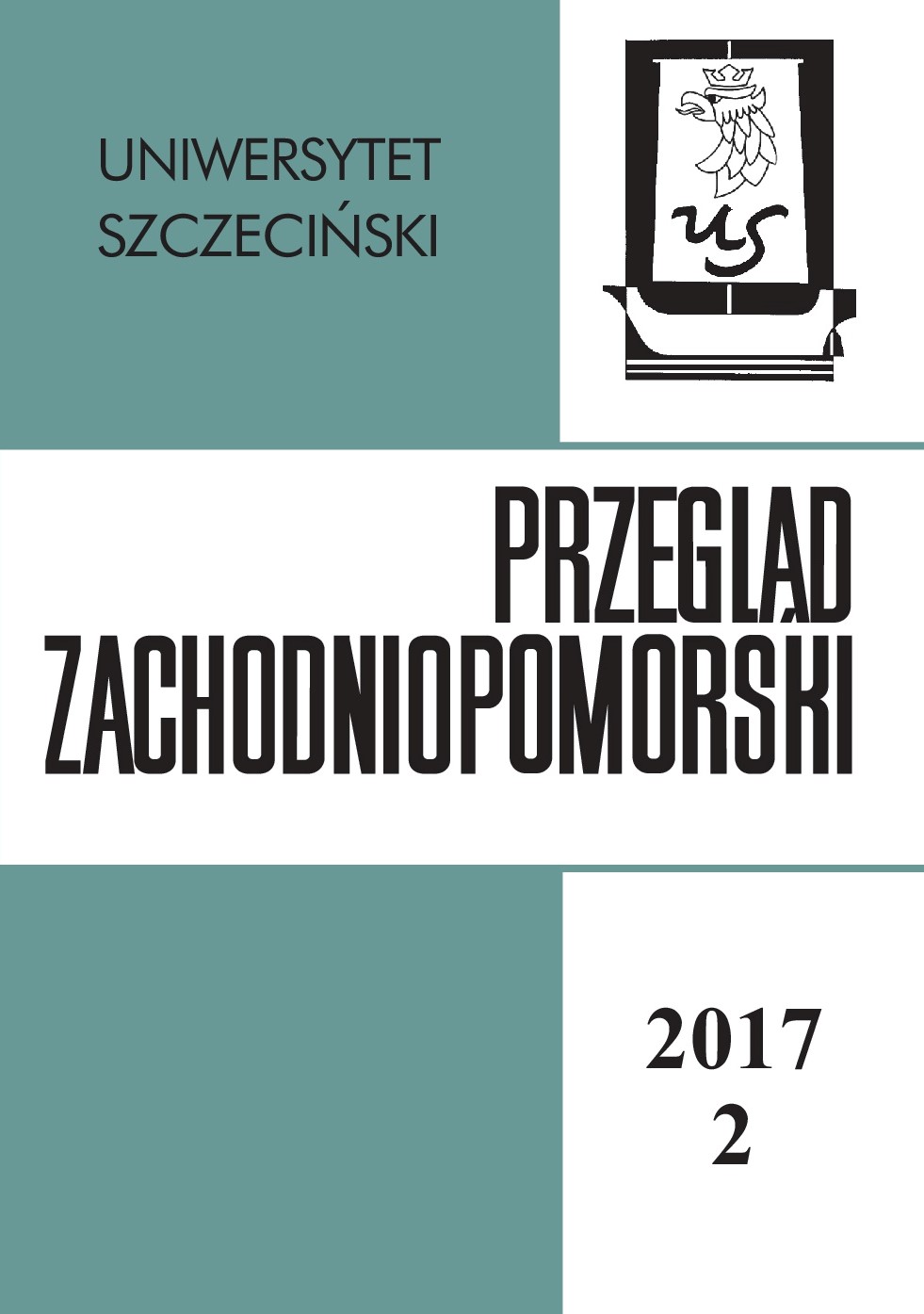
Keywords: Thomas Kantzow; Pomeranian historiography; Jan Długosz; Pomerania; Poland; Teutonic Order
Thomas Kantzow, a chronicler affiliated with the court of Pomeranian Dukes, mentioned Poland several times in his work titled Pomerania. It seems that he was not as interested in the neighbouring country as in the relations between Poland and the Teutonic Order. Nearly all references to Poland come from the chronicle of Jan Długosz. Although the citations were quite accurate, their placement in Kantzow’s narration changed the meaning of the entire story. These measures allowed the Pomeranian chronicler to create a highly negative image of the Teutonic Order, presented not only as the enemy of the Duchy of Pomerania, but also as the foe of other Christian countries. Amongst the crimes and vices of Teutonic monks Kantzow enumerated cruelty, greed and breaking of agreements. Surprisingly, disobedience against the Pope was also mentioned, though the chronicler himself was Protestant.
More...
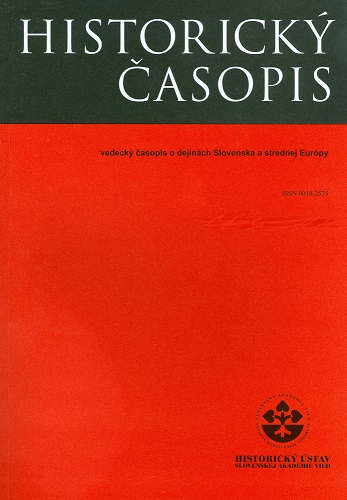
Review of: Magnae Moraviae fontes historici I. Annales et chronicae. Eds. Dagmar Bartoňková, David Kalhous, Jiří K. Kroupa, Zdeněk Měřínský, Anna Žáková. Praha: KLP, 2019, 506 s. ISBN 9788087773369.
More...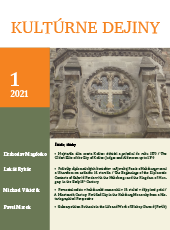
Keywords: Interview; Rastislav Kožiak
PhDr. Rastislav Koziak, PhD. (* 1969) undoubtedly belongs among the important personali¬ties of contemporary Slovak historiography. From the beginning of his career he has been associated with the Department of History of the Faculty of Arts and Letters of the Matej Bel University in Banská Bystrica, a department which he has also been the head of for a long time (since 2004). In his research he focuses on the history of Christianity, especially in the early Middle Ages, and on the history of historiography. As an author and editor, he collabo¬rated, for example, on the publications Orders and Monasteries in the Middle Ages, Pagan¬ism and Christianity, The Saint and His Function in Society, Saint Adalbert - Saint, Era and Cult, Chapters from the Contemporary Philosophy of History. He is also one of the tireless organizers of the life of the historical community in Slovakia and he actively participates in the development of historical science in surrounding countries. He completed his university studies at the Faculty of Arts and Letters of Comenius Uni¬versity in Bratislava (History and Slovak Language double major), where he also completed his doctoral studies. After their completion, he returned to his native Banská Bystrica, where he has worked ever since at the University of Matej Bel. In the academic environment he was also involved in the self-governing bodies of the faculty, as a two-time chairman of the fac¬ulty academic senate, which testifies to the trust he enjoys in the workplace. Students know him from his courses devoted to the history of medieval Europe, medieval Christianity, his¬tory and methodology of historiography. In the years 1999 - 2002 he lectured externally at our Department of History, first at the University of Žilina and later at the Catholic University in Ružomberok. He completed several research and lecture stays at universities abroad, for example in Giessen, Krakow, Lublin, Warsaw, Katowice, Kielce and Opole. His enthusiasm for history was apparent from his student days, when in 1993, together with Martin Kanovský and Ondrej Červený, he founded and edited the professional journal Text - revue for the humanities. He is a valued and respected member of various editorial boards of a number of scientific journals in Slovakia, the Czech Republic and Poland (Annal¬es historici Prešoviensis, Byzantinoslovaca, Kultúrne dejiny, Forum Historiae, Acta historica Opaviensis, Studia mediaevalia Bohemica, Saeculum Christianum, Przegląd Historyczny). He initiated the creation of the scientific journal Acta historica Neosoliensia, which has been published by his department since 1998. He also co-founded the Central European historical magazine Historia Slavorum Occidentis, which is published in Poznań under the auspices of historians from Adam Mickievicz University, and has been Deputy Editor-in-Chief of this journal since 2012. Rastislav Kožiak is also a member of many associations and societies. Since 2006 he has been a member of the Slovak National Committee of Historians, in the years 2008 - 2018 he was chairman of the Slovak National Commission of C.I.H.E.C. (International Commission for Comparative Ecclesiastical History), he has been a member of the Slovak-Polish Bilateral Commission of Historians since 2009, a member of the Scientific Board of the Institute of His¬tory of the Slovak Academy of Sciences since 2010, and a member of the Commission of the Early History of the Slavs at the International Committee of the Slavists since 2015. In 2006, he initiated the founding of the Centre for the Study of Christianity in Banská Bystrica, within which he co-organized several scientific conferences in the field of church history research. In 2012, he was awarded the Professor Ján Komorovský Award, which is awarded by the Slovak Society for the Study of Religions at the Slovak Academy of Sciences (SAS). In 2019, the rector of the Silesian University in Katowice awarded him the Gold Badge of the Silesian University for his support of the university. The year 2016 marked one of the peaks of his professional career when he was, during the congress of the Slovak Historical Society at the SAS in Skalica, elected chairman of this society.
More...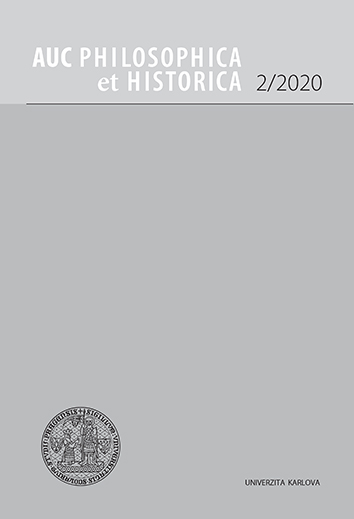
Keywords: royal power; human story; archetyp; Annales school; Přemysl Otakar II.
In this following text I take an excursion into my emerging dissertation and here I present some basic considerations about the issue of depicting the image of personality of the fifth Czech king on the basis of literary sources. When examining the information source, I also proceed from the teachings of the main representatives of the Annales school, which mean from the point of view of historical-anthropological.
More...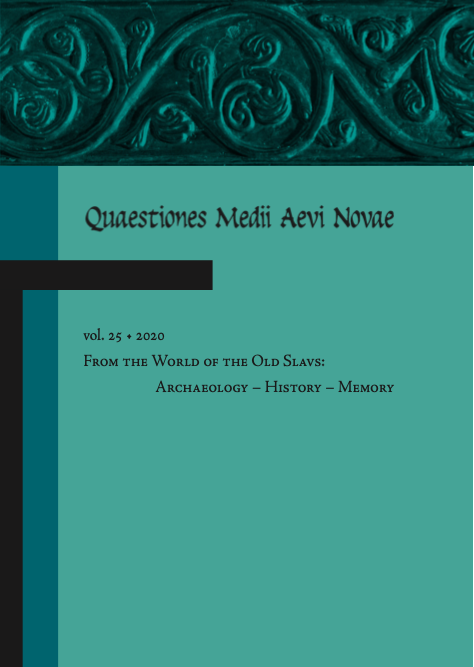
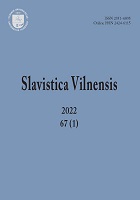
Keywords: “Annales Ecclesiastici” by Baronius; East Slavic translations; comment apparatus; lexical glosses;
The article examines marginalia in one of the East Slavic hand-written versions of “Annales Ecclesiastici” by Caesar Baronius (Russian State Library, f. 256, no. 16, 17th century) in comparison with the Latin original, the Polish translation of Piotr Skarga published in 1607, and other Slavic versions from the 17th–18th centuries. Marginal comments of the book apparatus were studied in a pragmatic aspect, which took into account the narrative impact on the reader; glosses were analyzed in terms of lexemes’ interaction, considering their various origins and stylistic status. The author comes to the conclusion that the historical narrative formed through comments has a profoundly original nature. In the analyzed manuscript, the comments do not always follow Skarga’s commentaries: in part, their contents are possibly influenced by the Latin original, and in part, they represent their own emphases and judgments. The linguistic analysis shows that the vocabulary of Polish or Ruthenian origin (both with Slavic and non-Slavic (Greek, Latin, and German) roots) is glossed widely but inconsistently. The words of Greek and Slavic origin, which may have explanatory functions, are stylistically associated with both the literary Old Church Slavonic tradition and business writing. Less often, Polonisms can themselves play the role of explanatory marginalia.
More...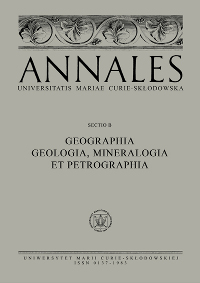
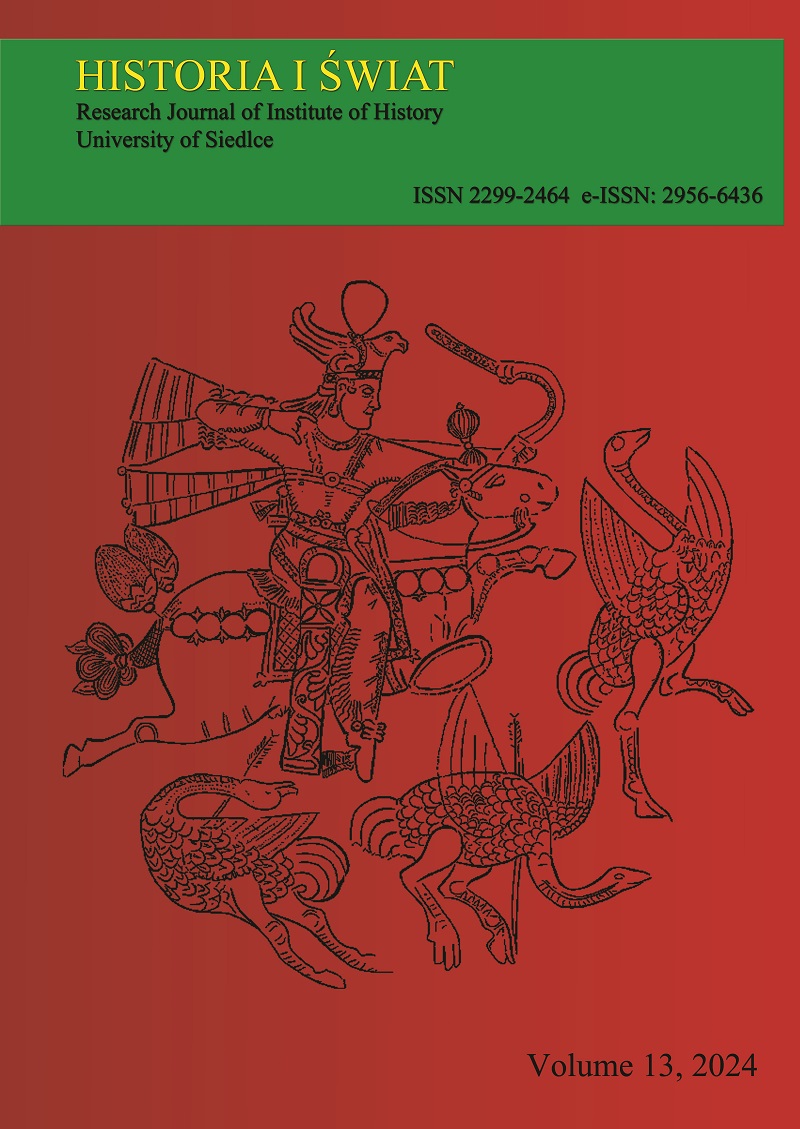
Keywords: Sasanians; Iran; Eutychius of Alexandria; Valerian; the crisis of the third century; Shapur I
In the chronicle of Eutychius of Alexandria, we find a recast version of the death of Emperor Valerian. Eutychius did not understand the reality of the third century very well. His testimony is interesting, showing that the fate of the unfortunate emperor was not obvious and aroused much conjecture.
More...Keywords: Roman abattoir; faunal remains; hornless cattle; slaughter profiles; improved species
Following the archaeological research carried out in the Partoș district, 28J Dacilor st, from the city of Alba Iulia (Colonia Aurelia Apulensis) in 2016, eight archaeological features were identified, with three levels of Roman habitation, dating from the 2nd-3rd centuries AD. On this occasion, a large sample of animal remains was collected, including a lot of 805 fragments that are the focus of the current material. Although relatively much digging has been done in the area, given the large amount of animal horns and bones (mainly cattle), it is assumed that there was an abattoir in the vicinity that supplied the Roman colony with meat products. Cattle account for 58.38% of the sample, with domestic pig coming in second at 17.95%, followed by small ruminants (14.99%), horse (3.94%), dog (0.4%), and fowls. The only hunted species is the roe deer, and only one remains.The distribution of animal bones by body region reveals that, in the case of cattle, cephalic elements, particularly horns, account for the majority share (55.07%). The food-valued parts (belts, limbs, and spine) account for only 27.36% of the total, with the distal parts of the limbs accounting for 17.57%. In the case of the pig, the anatomical distribution confirms that larger portions of animal carcasses slaughtered in the area were processed elsewhere (for consumption). In the case of sheep and goats, forelimbs, hindlimbs and girdles (shoulders and thighs) total 39.47%, suggesting that a good portion of the slaughtered animals were delivered/sold, their bones accumulating elsewhere. Additionally, the low percentage of ribs and vertebrae suggests that the animal carcasses were occasionally delivered whole after being cut. Although animals were killed nearby, particularly mature ones, horses did not involve in the diet of the locals. At this point, there are insufficient details to explain the existence of some bones from edible parts. 44.46% of the cattle were slaughtered for meat, with a focus on immature males and a smaller percentage of females following the reduction in economic performance.Cows were exploited for several years as milk providers and for traction at a rate of 55.56%. This fact is supported by the presence of castrates, yoke traces on the horns, and pathological conditions on metapodials. 24% of the pigs were slaughtered under one year, with the majority slaughtered between 1-2.5 years (57.15%). The proportion of animals kept over 3-4 years (as breeding individuals) is 19.05%. In the case of small ruminants, young and sub-adult specimens (62.5%) are exploited for meat, while adult and mature animals (37.5%) are kept for dairy and wool.Cattle appear to have dominated the Roman city's food economy, with pigs, sheep, goats, and birds following closely behind. Game is used primarily for raw materials such as horns, skins, and furs, with a minor contribution to food production. The racial diversity of the local cattle population, the existence of hornless bovines, and the evidence of imported "improved" animal types like sheep, chicken, and cattle are all highlighted in this material. The presence of few cut-marks on the bones confirms the presence of personnel trained in slaughtering and butchering animals, implying the presence of an abattoir in the studied area.
More...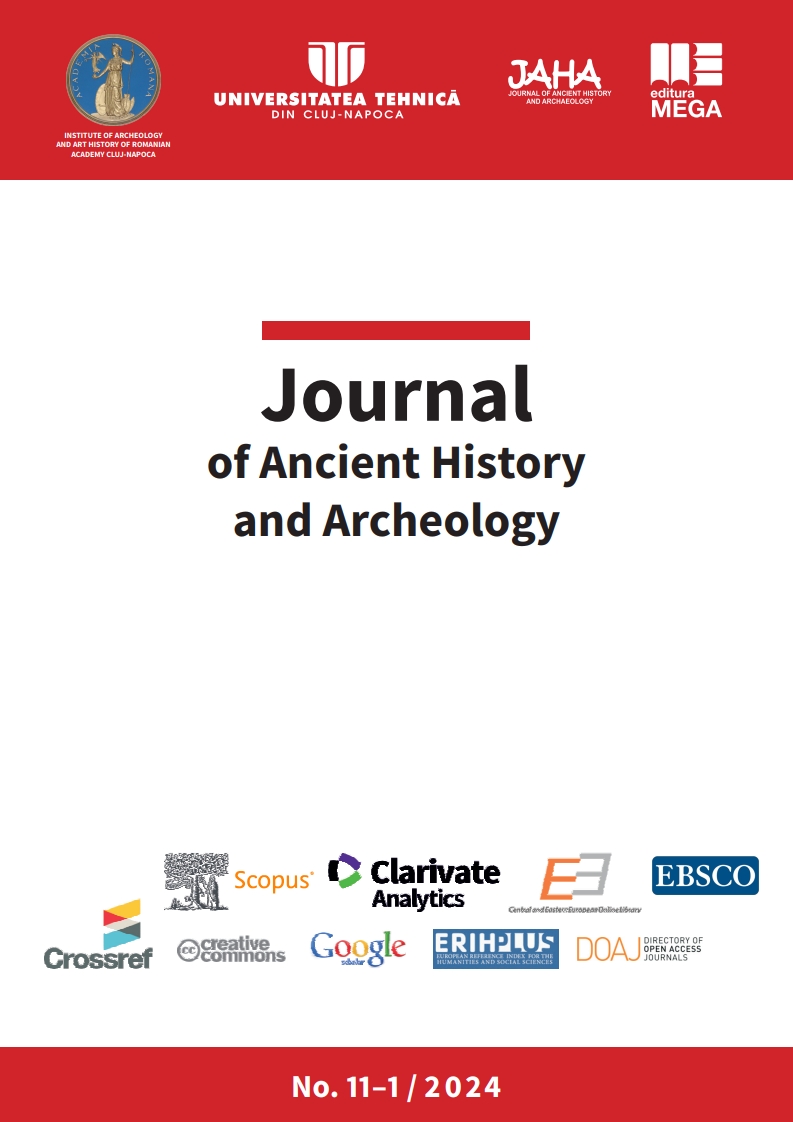
Keywords: Colonia Aurelia Apulensis; private collection; aedicula; hunting scene; Norico-Pannonian noble;
This study addresses the issue raised by a funerary monument accidentally discovered in the area defined by archaeologists as the "eastern necropolis" of Colonia Aurelia Apulensis, component of the Apulum conurbation, the most significant city in the imperial province of Dacia. The monument was excavated under unfortunate conditions, somewhere in the years 2002-2003, during the connection of a private household to the city's water network. Due to the lack of specialized supervision by archaeologists, the monument was brutally removed from its original context (in situ) by an excavator, which struck and partially damaged a portion of the figurative scene depicted on the funerary monument. The current holder of the cultural property, a collector from Alba Iulia, was informed about this situation. He is the one who recovered the monument, restored it, and exhibited it within his collection at his residence. To conclude, the study also addresses the legal aspects regarding the ownership regime of such cultural goods, namely the legality of private collections of antiquities in cities that are overlapping archaeological sites, emphasizing the lack of involvement of public institutions in managing the evolution of these phenomena
More...